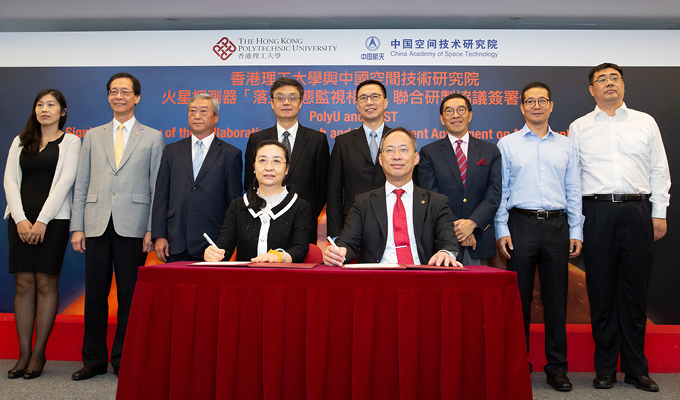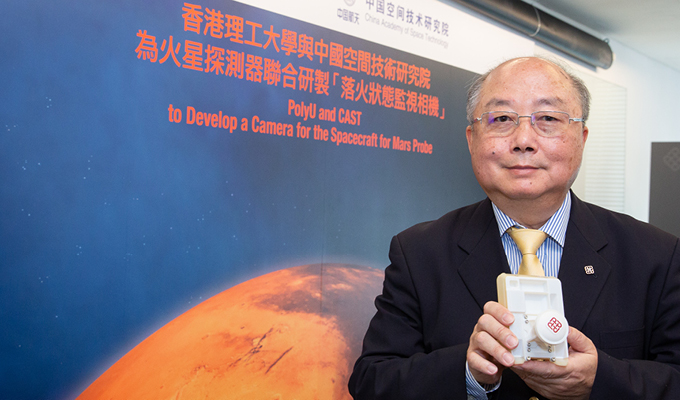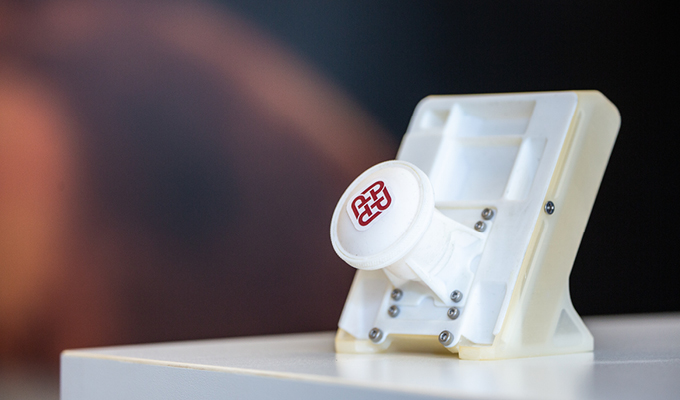


PolyU will collaborate with the China Academy of Space Technology (CAST) to develop and produce a camera on the spacecraft to Mars scheduled for launch in 2020 at the earliest. The aims of the project is to conduct an orbital and surface exploration of Mars in a single mission, the first-ever attempt in the world. The two parties signed the Collaborative Research and Development Agreement on Mars Exploration Project at a ceremony held on 22 August 2018.
PolyU is to design and produce a Mars Landing Surveillance Camera (Mars Camera), which will be located on the outside top surface of the Mars Lander. The Mars Camera will monitor the deployment status of the Mars Rover with respect to the status of the solar panel, antenna, as well as the rover's movement. The information is critical for the successful movement of the Mars Rover onto the Mars surface.
PolyU will mobilise a 20-member-strong research team led by Prof. Yung Kai-leung, Chair Professor of Precision Engineering and Associate Head of the Department of Industrial and Systems Engineering, to work closely with CAST experts on the development of the Mars Camera.
The Mars Camera will have to be light in weight (around 380 grammes) while strong and durable under extreme temperatures during the extended period of space travelling between Earth and Mars (over nine months), followed by operation under extremely low temperature on the Mars surface. It will also be able to tolerate impact shock of 6,200G (i.e. 6,200 times of the force of Earth's gravity). Despite having a wide angle field of view (a maximum of 120 degrees horizontally and a maximum of 120 degrees vertically), the Mars Camera will have low image distortion.
Being the only tertiary institution in Hong Kong that possesses international space qualification experiences, PolyU has long been actively participating in space exploration projects through designing and manufacturing advanced space tools. These include the "Mars Rock Corer" for the European Space Agency's 2003 Mars Express Mission and the "Soil Preparation System" for the Sino-Russian Space Mission in 2011. The University later participated in the nation's lunar exploration programme and developed the "Camera Pointing System" for Chang'e 3 and Chang'e 4, and then the "Surface Sampling and Packing System" for Chang'e 5 and Chang'e 6.